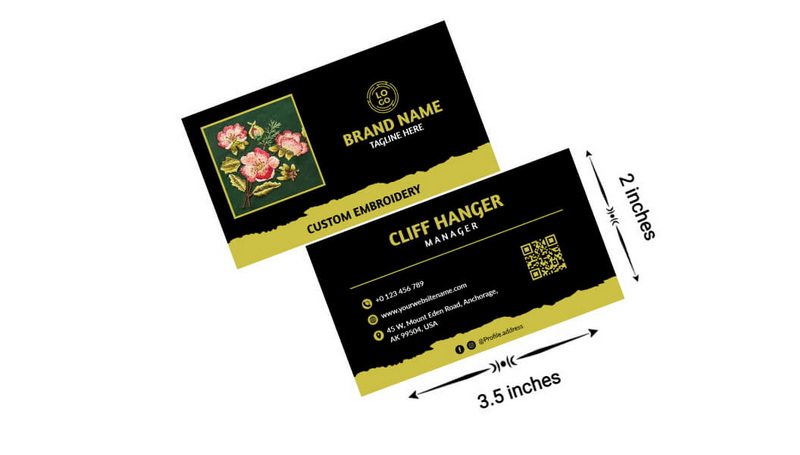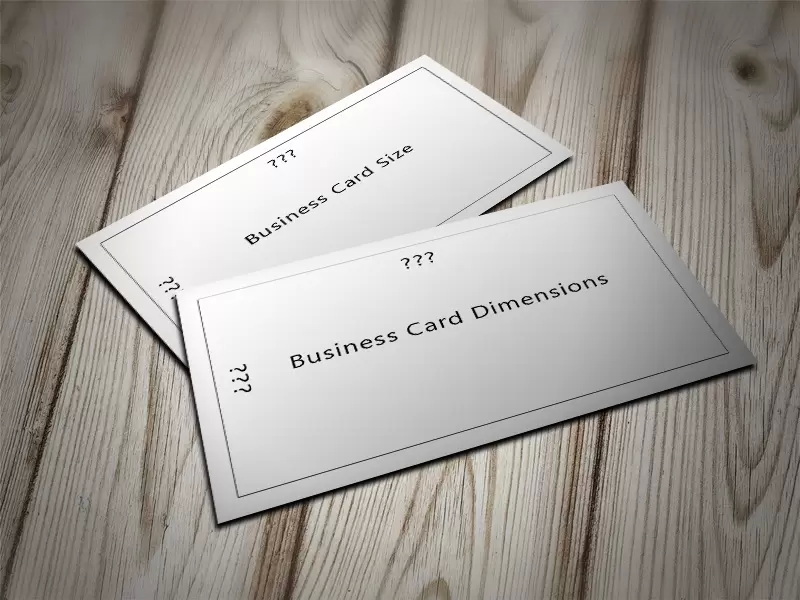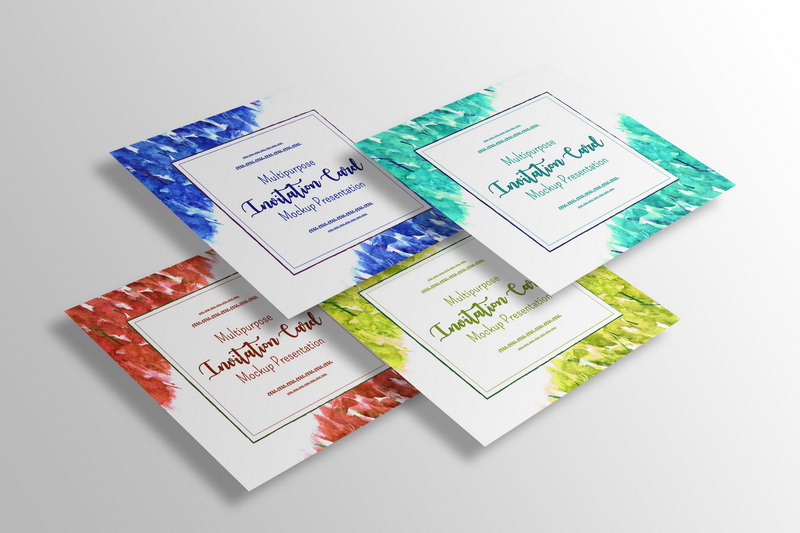Content Menu
● Standard Business Card Sizes
● Regional Variations
● Design Considerations
● Custom and Non-Standard Sizes
● Thickness and Material
● Digital Business Cards
● Best Practices for Business Card Design
● Conclusion
● Frequently Asked Questions
>> 1. What is the standard business card size in the United States?
>> 2. Why do business cards have different sizes in different regions?
>> 3. What is the purpose of a bleed area in business card design?
>> 4. What is the recommended resolution for printing business cards?
>> 5. Can business cards be made in custom shapes?
● Citations:
Business cards are a crucial tool for networking and marketing in various industries. They serve as a compact representation of an individual or company, providing essential contact information and a visual identity. The size of a business card is important because it must be practical for carrying and storing while also providing enough space for key details. In this article, we will explore the average size of business cards, regional variations, and design considerations.

Standard Business Card Sizes
The standard size for business cards in the United States is 3.5 inches by 2 inches (approximately 89 mm by 51 mm). This size is widely accepted and fits comfortably in wallets and card holders. However, there are variations in other regions. For example, in the United Kingdom and most of Europe, the standard size is slightly larger at 3.35 inches by 2.17 inches (85 mm by 55 mm).
Regional Variations
Business card sizes can vary significantly by region, reflecting local preferences and standards. Here are some common sizes found in different parts of the world:
- United States and Canada: 3.5 inches by 2 inches (89 mm by 51 mm).
- United Kingdom and Europe: 3.35 inches by 2.17 inches (85 mm by 55 mm).
- Japan: 3.58 inches by 2.16 inches (91 mm by 55 mm).
- Australia: 3.54 inches by 2.165 inches (90 mm by 55 mm).
- India, Thailand, Taiwan, Vietnam, South Korea: 3.54 inches by 2.17 inches (90 mm by 55 mm).
- China, Hong Kong, Singapore: 3.54 inches by 2.12 inches (90 mm by 54 mm).
These variations are important to consider when conducting international business or marketing, as using the appropriate size can make your card more familiar and easier to store for your contacts.
Design Considerations
When designing a business card, several factors should be considered:
- Bleed Area: Adding a bleed area (usually 1/8 inch) ensures that designs extending beyond the cards edges are properly trimmed without leaving unprinted borders.
- Resolution: For high-quality printing, designs should be set at a resolution of 300 dpi (dots per inch).
- Pixel Dimensions: For digital designs, a standard business card size in pixels is approximately 1050 x 600 pixels for a 3.5 x 2 card at 300 dpi.
- Color Mode: Use CMYK color mode for printing to ensure accurate color representation.
- Fonts and Text Size: Choose fonts that are clear and readable, with a minimum text size of 8 points for body text.

Custom and Non-Standard Sizes
While the standard sizes are widely used, there are options for custom and non-standard sizes. These include:
- Slim Cards: Often used for loyalty cards or appointment cards, these are typically 1.75 inches by 3.5 inches.
- Square Cards: Useful for promotions, these are usually 2 inches by 2 inches.
- Die-Cut Cards: Allow for custom shapes to enhance brand identity. Examples include cards shaped like company logos or industry-specific symbols.
- Folded Cards: These can provide additional space for information or create a unique design element.
Thickness and Material
The thickness of a business card, often referred to as its weight, is typically measured in points (pt) or grams per square meter (gsm). Common thicknesses range from 14pt to 32pt, with thicker cards offering a more premium feel. The material used can also vary, with options including:
- Standard Cardstock: Commonly used for most business cards.
- Recycled Paper: Ideal for companies emphasizing sustainability.
- Plastic Cards: Durable and waterproof, often used for loyalty or membership cards.
- Metal Cards: High-end option that offers a luxurious feel.
Digital Business Cards
In recent years, digital business cards have gained popularity, especially among tech-savvy professionals. These cards can be shared via QR codes, NFC tags, or apps, allowing for easy updates and environmental benefits. However, traditional physical cards remain essential for face-to-face networking and brand recognition.
Best Practices for Business Card Design
Effective business card design involves balancing aesthetics with functionality. Here are some best practices:
- Keep It Simple: Avoid clutter by focusing on essential information.
- Use High-Quality Images: Ensure any images or logos are clear and well-resolved.
- Consistent Branding: Match your cards design with your companys overall brand identity.
- White Space: Use white space effectively to make your card easy to read.
Conclusion
In conclusion, the average size of a business card varies by region but is generally around 3.5 inches by 2 inches in the United States. Understanding these sizes and design considerations is crucial for creating effective business cards that represent your brand well.

Frequently Asked Questions
1. What is the standard business card size in the United States?
The standard business card size in the United States is 3.5 inches by 2 inches (approximately 89 mm by 51 mm).
2. Why do business cards have different sizes in different regions?
Business card sizes vary by region due to local preferences and standards. This ensures that cards are familiar and easily stored by contacts in different parts of the world.
3. What is the purpose of a bleed area in business card design?
The bleed area ensures that designs extending beyond the cards edges are properly trimmed without leaving unprinted borders, preventing important elements from being cut off.
4. What is the recommended resolution for printing business cards?
For high-quality printing, business card designs should be set at a resolution of 300 dpi.
5. Can business cards be made in custom shapes?
Yes, business cards can be made in custom shapes using die-cutting techniques, allowing for unique designs that enhance brand identity.
Citations:
1.https://www.moo.com/blog/inspiration/business-card-size-and-dimension-guide
2.https://www.uprinting.com/business-card-sizes.html
3.https://www.dreamcustomboxes.com/dimensions-of-business-card/
4.https://www.brandly.com/blog/standard-business-card-size/
5.https://smartpress.com/blog/features/business-card-size
6.https://bbs.gter.net/thread-402330-1-1.html
7.https://www.goldimageprinting.com/content/standard-business-card-sizes.html
8.https://www.48hourprint.com/business-card-sizes.html
9.https://graphicdesign.stackexchange.com/questions/629/what-are-the-dimensions-of-a-business-card
































